Over my near decade of teaching fifth grade, I have found that whole group instruction is still very much needed. The skills and meaty concepts that the fifth graders have to master makes it virtually impossible to cover in a mini-lesson or even in small group math. My students (and me and my pacing guide) still really need that whole group instruction time.
With that being said, whole group instruction can take so.many.different.formats. It is not just the teacher teaching and the students listening and copying. It is so much more than that. On this post, I want to break down what whole group instruction and activities looks like in my classroom.

Whole Group Instruction: The Lesson
My whole group lesson length varies depending on the skills we are practicing or I am introducing. However, the format almost always stays the same.
1.) Introduce the skill through a word problem or context (this helps build conceptual understanding).
2.) Lots of student discussion and exploration while I guide the discussion around the skill/word problem/context. This is key. Students need to regularly talk about math AND hear math from their peers – and not just those peers in their small math group. My students who struggle need to hear from my students who have mastered concepts and vice versa. Some of my “struggling” (eh – I hate that term) students have the biggest a-ha moments during whole group instruction that all of my students can benefit from hearing.
3.) Guided practice of the skill.
4.) Exit slip to informally assess the students’ current mastery levels (click here to see 4th grade math exit slips and here to see 5th grade math exit slips).
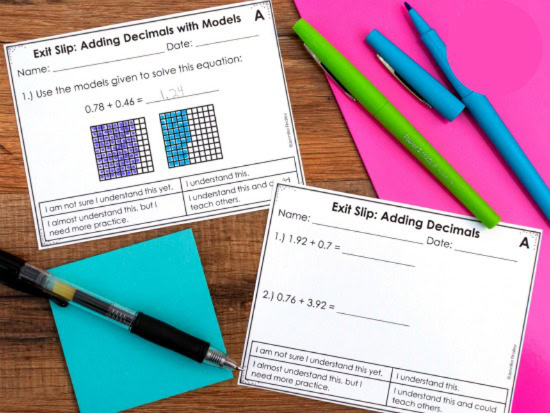
After this, we move into the independent or not-so-independent activities and practices.
Whole Group Instruction: “Independent” Activities and Practice
Our whole group practice and activities vary from day to day, skill to skill. It does not always look like this: students working while teacher teaches a small group or checks in with individual students. But, sometimes it does look like that. In a minute, we will dive into some of my favorite activities and ways to practice that we do on whole group instruction days, but first, here are the factors that guide what we do each day:
1.) Time
2.) The students’ current mastery level with the skill based on the exit slips or my observations
3.) What I have prepared ahead of time
Now, let’s dive into all the different types of activities you can use to make the most of this time + keep your students engaged and working hard (in no particular order).
1. Independent Practice with Small Group Instruction
After giving the exit slip, I can pull my small groups based on it. While I am pulling small groups, my students can be working independently on the same task or a similar task.
Click here to read more about how I pull small groups during whole group math days.
For independent practice, I use the following resources (not all of these each day):
- Interactive notebook resources that are heavily student-driven and allow for multiple opportunities to practice a skill
- Word problems for interactive math notebooks are also a go-to resource, and I often use these for the guided practice aspect of the lesson, too.
- Practice printables from my fifth grade math supplemental resources.
- Leveled math skill sheets that allow me to quickly differentiate independent practice.
2. Guided Math Manipulative Practice
This is one of my favorites and is often just an extension of the whole group lesson. We do this a lot with decimals and fractions skills. This type of practice follows this basic format:
- Present a task or an equation to the students.
- Discuss how the manipulatives can help us solve the task or equation.
- The students use the manipulatives to solve the task or equation.
- The students discuss with partners how they used the manipulatives and/or justify their answer using the manipulatives.
- Discuss as a class and record a visual representation of what the students did with the manipulatives (or an abstract representation).
- Repeat steps 1-5 with a new task or equation.
Click here to read a detailed blog post about my favorite math manipulatives for 5th grade.
3. Guided “Independent” Practice
Sometimes, I find that my students are not ready to really be let loose with independent practice, but continuing guided practice is not the answer either. Enter: Guided “Independent” Practice.
Our Guided “Independent” Practice follows this basic format (similar to the one for the guided manipulative practice):
- Present a task or problem to the students.
- Discuss the task or equation (mainly to ensure the students have an access point).
- Students solve the problem and check/discuss with an assigned partner.
- Discuss as a class, recording work for the students to see if necessary.
- Repeat steps 1-4 with a new problem or task.
4. Partner Math Games
Easily one of my students’ favorite activities to complete after whole group lesson is partner math games. We play the same five partner games throughout the year (see below picture), changing out the content and math skills as needed. My students love them, and I love that they can quickly grab their game and get to playing and practicing math.
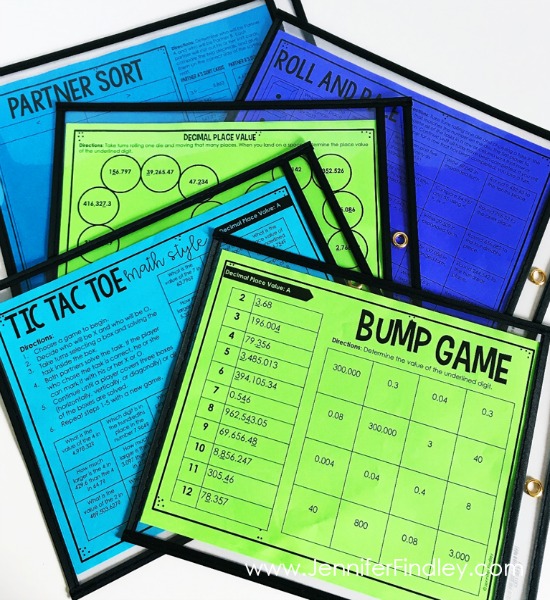
Click here to read a more detailed post about my go-to partner math games AND grab 30+ free ones!
To see the grade level sets of partner games in my store, click on your grade level below:
4th Grade Math Partner Games BUNDLE
5th Grade Math Partner Games BUNDLE
5. Scoot Math Review
We pretty much love SCOOT in my classroom. Sometimes, something simple like putting questions on task cards and letting the students walk from desk to desk is really just what you need. I have found that those same students who struggle to get 5-6 questions done independently can knock some problems out with SCOOT.
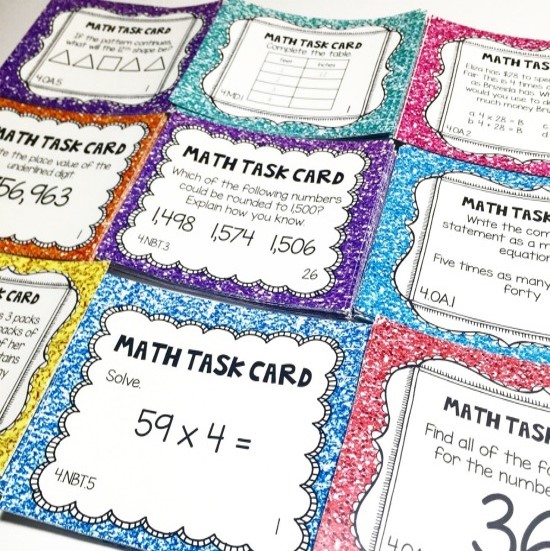
Click here to read more about SCOOT and how I use it to informally assess my students.
Do you need math task cards that cover all of the CCSS standards? Click on your grade level to check them out.
6. Around the Room Review
This is one of my go-to math activities before an assessment, but it works well at any point in instruction. Basically, I tape problems around the room, group the students into small groups, and have them rotate at my signal solving the problems on their own paper. We do a final rotation, if time allows, where one group is assigned a problem to solve on the chart. Read more about this math activity here.
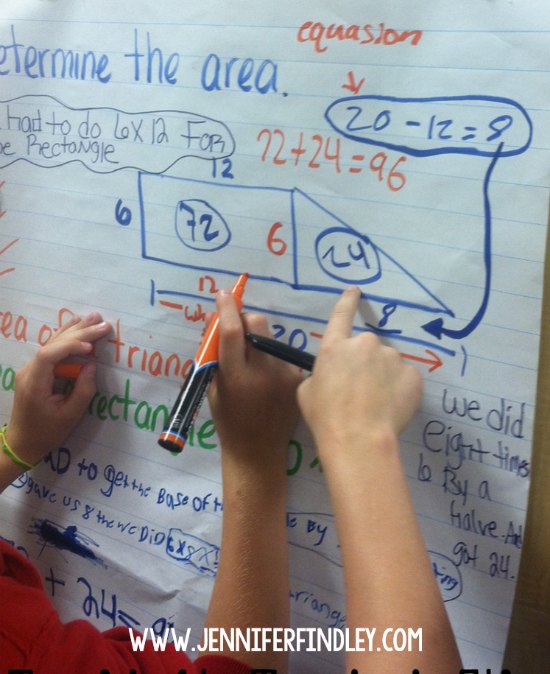
Another twist on the Around the Room activity that we love is having the students rotate through different levels of understanding for a math skill. This works the same as the above activity, except the tasks all require a different level of understanding. The levels are:
- Define It: a list of 2-5 terms are listed for the students to define
- Practice It: requires the students to apply their knowledge to answer 2-6 practice problems
- Create It: this task is a bit more complicated, and the students have to apply their knowledge to create a task, a number, a word problem, etc. based on the standard
- Explain It: requires the most thinking and requires the students to explain their thinking or explain some aspect of the math skill
Click here to see a complete resource with those specific tasks for each 5th grade math standard.
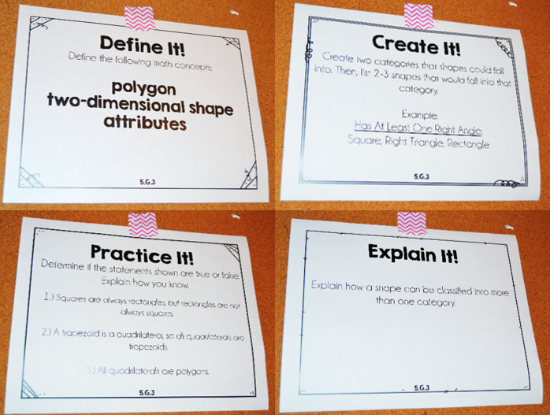
7. Collaborative Group Activities
And finally, we also complete collaborative group activities. This may include:
- Creating a collaborative poster
- Completing a math project
- Creating lessons to teach the rest of the class
What do you do during math center days?
My students complete math centers 2-3 times a week. Click here to read a detailed post about my math center instruction.
Which of these activities do you do in your classroom? Do you have any other activities that work well during whole group instruction days? Let me know in the comments!







Thank you for this info! It sounds like you take a hybrid approach to whole group vs. math centers. I’m wondering – How do you decide which lesson require centers and which would be better suited for whole group instruction?